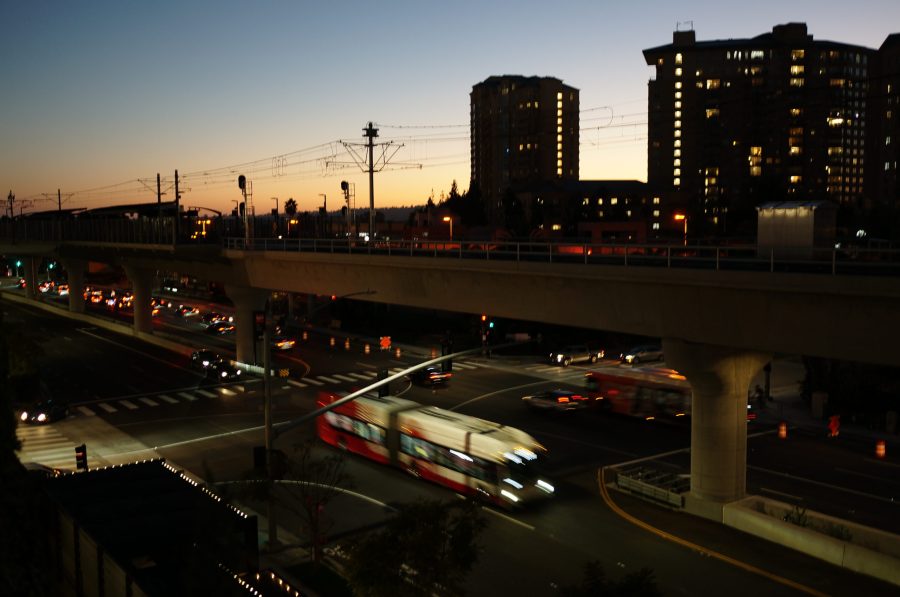On Oct. 29, volunteers redrawing San Diego’s City Council district boundaries approved a draft of a new map. This map, known as the Chair’s map, proposes keeping UC San Diego with La Jolla, but splits University City in half.
The tentative map also would keep Rancho Penasquitos divided in two, despite lobbying from residents who have asked for reunification. Torrey Highlands would shift from District 5 to District 6, which has been controversial with some residents.
However, it stays away from a proposition to split Clairemont into four parts by dividing it instead into two at Genesee Avenue. The proposed map would also split University City between Districts 1 and 6 at Genesee Avenue and Eastgate Mall. However, it would unite Normal Heights in District 9 and Linda Vista in District 7.
The map would reorganize several other neighborhoods in San Diego; Redwood Village and Rolando Park would move from District 4 to District 9, Mount Hope would move from District 9 to District 4, and Shelltown and Southcrest would move from District 9 to District 8.
The Chair’s Map courtesy of Michelle Guerro for the San Diego Union Tribune.
However, while it had appeared that the Chair’s map seemed to have the majority support, the commissioners on Nov. 4 voted to reject it. On Nov. 9, the commission asked to prepare legal analysis on three different maps, one of them being the San Diego Collaborative Communities Map favored by many activists.
However, when the commission met again on Nov. 13, they did not pick the Collaborative Map. Instead, the commission voted 7 to 2 for the Clairemont United Compromise Map. This vote on Saturday seals the Compromise Map as the blueprint for the final map, with some minor changes added onto it.
The Clairemont United Compromise Map courtesy of Michelle Guerrero of the San Diego Union Tribune.
Advocates of the Chair Map had posited that one of the main strengths of the new district map is that it would help benefit minority groups in San Diego. According to the San Diego Tribune, this map would increase the percentage of Asian-American Pacific Islander (AAPI) in District 6 from 34% to more than 38%.
However, opponents such as Associated Students’ AVP of Local Affairs Aidan Lin have also criticized this, saying that anything under 40% would be inadequate.
“The Chair’s map is wholly inadequate when it comes to addressing the needs of underrepresented and historically oppressed communities,” Lin said. “It doesn’t achieve a high enough AAPI population in District 6 which is the AAPI empowerment seat, it doesn’t listen to student needs in a way that allows us to resolve our own local struggles like housing and transportation, and it keeps … two communities that were split … divided when they should be reunited.”
This criticism lines up with the demands that UCSD students and other activists have made for the new redistricting of San Diego. Since September, students have been calling for UCSD to become a part of a new, majority-AAPI district. Students contend that their demands and needs have more in common with District 6 to the east of campus rather than District 1’s La Jolla beach community. Proponents of this map call it the San Diego Collaborative Communities map.
The San Diego Collaborative Communities map would split UCSD from La Jolla and join it with a newly drawn District 6 that would be 42% AAPI and would also increase Latino populations in Districts 8 and 9. Lin and other activists supporting this map see joining UCSD with District 6 as an important step towards helping UCSD students with pressing problems such as the housing crisis.
The map would join La Jolla with beach communities in District 1, while District 2 would be shifted more inward so Clairemont, Kearny Mesa, Serra Mesa, and Linda Vista would be reunited. District 5 would go from Del Mar Heights to Rancho Bernardo, while District 7 would connect from Carmel Mountain Ranch to Del Cerro.
According to A One Page Guide compiled by Lin, La Jolla is made up of a White-majority population (about 79.3%) where individuals usually tend to be older (56.1% aged 40 and older), and wealthier ($116.9k median household income). However, University City, which includes the UCSD Campus and nearby student population centers has a more diverse (49.0% White, 33.3% Asian), younger population (68.3% aged 0-39), with a median household income around $79.8k.
“The UCSD community has such a diverse group; we have amazing cultures and perspectives that are represented, that get overshadowed when you’re placed with these coastal districts,” Lin said.
“[District 1’s City Council Member has historically] always come from La Jolla, always is of a certain demographic, is always well-off, and always basically listens to the needs of La Jolla over the needs of the student body,” Lin continued.
According to Lin, this has led to students’ issues being overruled by La Jollans, such as the housing crisis. For example, on Oct. 19, 2020, the La Jolla Shores Association and a local homeowners group filed a lawsuit against UCSD’s planned Theatre District and Learning Neighborhood expansion, which would’ve included housing for 2,000 students.
In 2011, District 6 was created as a new ninth district in the redistricting process that year . During the redistricting process in 2011, a group of activists successfully pushed for District 6 as an AAPI empowerment seat, where the district’s largest demographic would be the AAPI community. Currently, District 6 has the highest AAPI population in any of the city council districts at approximately 35%.
Three commissioners on the volunteer redistricting panel, Commissioners Justine Nielsen, Roy MacPhail and Monica Hernandez, have voiced their support for the San Diego Collaborative Communities map. However, the other six panelists have instead backed the Chair’s map.
However, critics of the Collaborative Communities map said that the changes would be too dramatic, especially for District 1, 2, 5, and 7.
They also state that it steers away from San Diego’s longtime goal of having two coastal districts. While the proposed map has both District 1 and District 6 with shorelines, District 6’s shoreline would only have UCSD and some sparsely populated areas.
Commissioner Fred Kosmo, a critic of the Collaborative Communities map, said that the best compromise would be the Chair’s map.
“The Chair’s map is the best map as far as balancing the interests of all the people of San Diego and drawing the lines in a fair space consistent with our guidelines and trying to give everybody a voice,” Kosmo said.
In response, Lin stated that the current maps don’t represent the population of UCSD, only the coastal communities like La Jolla.
“We’ve been prioritizing the coastal communities for so long, now let’s see how they can bear some of this burden in this redistricting process so that the other communities that have been separated or underheard for decades can now finally be heard and we can empower those voices as well,” Lin said.
The Redistricting Commission will continue to meet weekly for five more public hearings until their deadline of Dec. 14 to approve a final report. If you wish to view the meetings, you can join via Zoom at 5:30 p.m. You can also visit their official website to see more information and to sign up for updates.
Photo taken by Althea Tien for The UCSD Guardian
















